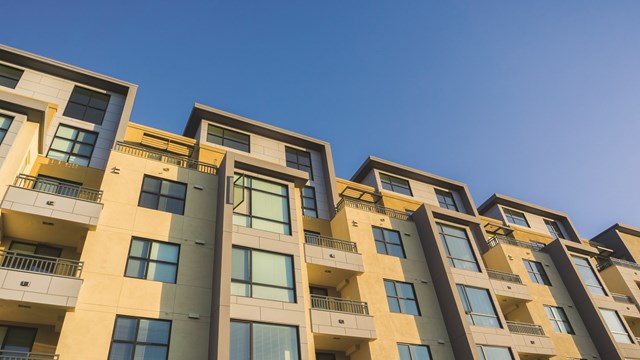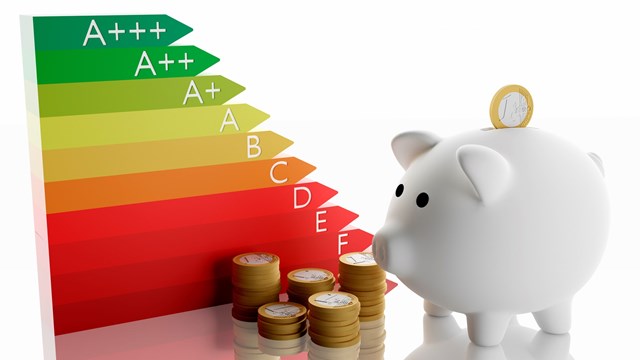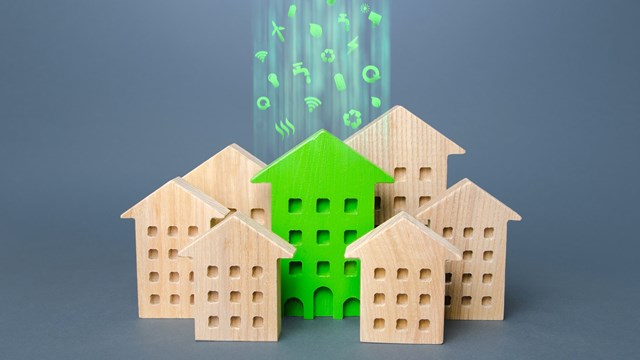Switching from technologies and equipment that are powered by fossil fuels to efficient, all-electric option—a process known as electrification—is fundamental to advancing building decarbonization and combating climate change. The electrification of buildings and transportation, which represent the bulk of New York’s statewide emissions, offers the greatest opportunity for emissions reduction, cleaner air, and energy savings when combined with energy efficiency.
New buildings are required to be all-electric—starting in 2026 for structures up to seven stories, and in 2029 for all new construction. Many existing buildings are being spurred by local regulation, such as New York City’s Local Law 97, to accelerate building decarbonization and electrification.
Though electrification stands to draw more power from the electric grid, integrating energy efficiency and demand management can significantly offset the increased electric load. When paired with renewables, going electric can deliver deeper emissions reductions and cost savings for buildings.
Although full electrification is feasible for most building types, a phased approach that begins with optimizing efficiency and pursuing partial electrification is often the most cost-effective path to ultimately eliminating the use of fossil fuels.
Take Stock of Building Energy Loads
For existing buildings, understanding the current energy load is an essential first step to building electrification and decarbonization. An assessment should evaluate opportunities to reduce energy use with efficiency improvements that are specific to the site and building condition.
Additionally, it should consider the building’s electrification readiness and the impacts of electrifying building systems and vehicle charging (if relevant). Key questions to ask include: Will the current electrical service support added demand? How will electrification impact peak electrical demand?
Ultimately, any study or assessment should provide a baseline of the building’s current energy use and estimated usage in an electrification scenario. This helps inform strategies for load reduction and efficiency gains, as well as options for efficient, zero-emission technologies.
Commercial, industrial, multifamily, and other large buildings may be eligible for funding to complete site-specific energy studies through NYSERDA’s Flexible Technical Assistance (FlexTech) program (www.nyserda.ny.gov/All-Programs/FlexTech-Program).
Up The Building Efficiency
While many all-electric technologies offer enhanced efficiency, improving the building envelope should be an initial step to reduce the energy load. Space heating is often the main source of on-site energy use, underscoring the value of insulating and sealing the building envelope. Other efficiency upgrades, such as window and door replacements, may emerge from an assessment or targeted energy study.
Reducing the electric load first with an efficient building envelope also stands to lower the cost of electrification. For instance, less electric demand could mean fewer solar panels or a smaller heat pump system to meet the building’s energy and heating and cooling needs.
The Inflation Reduction Act (IRA) increased the incentive amount offered by the 179D Commercial Buildings Energy-Efficiency Tax Deduction from $1.88 per square foot to $5 per square foot. Qualifying energy efficiency improvements include interior lighting upgrades, HVAC and hot water systems, and building envelope upgrades.
To qualify for the full deduction, buildings must achieve energy savings of 50%, whereas a building with at least 25% energy savings would receive a deduction of $0.50 per square foot, plus $0.02 per square foot for each percentage of savings above 25%.
Integrate Efficient, All-Electric Technologies
Not all electric equipment is equal in terms of efficiency. Cold-climate heat pumps use approximately 65% less electricity than electric resistance heating systems. Similarly, induction stoves are 10% more efficient than conventional electric stoves (not to mention three times more efficient than gas stoves).
Decarbonizing larger buildings typically involves a suite of electrification and efficiency solutions. Recovering wasted heat from HVAC systems or industrial processes is a leading opportunity for multifamily and commercial buildings that’s been championed across projects funded through the Empire Building Challenge.
In addition to heat pump systems, large buildings, municipalities, and campuses are evaluating the feasibility of thermal energy networks to decarbonize heating and cooling on a larger scale. These systems use a network of pipes to connect multiple buildings and distribute thermal energy through geothermal processes, surface water, or recirculating waste heat.
Electrification for multifamily and commercial buildings may involve electric vehicle (EV) charging infrastructure for residents, employees, and fleet vehicles. Employers and multifamily buildings can access incentives through their utility or Charge Ready NY 2.0 to reduce the cost of installing charging stations, with bonus incentives available to facilities located in Disadvantaged Communities.
Besides energy and emissions savings, consider how electrification strategies will impact a building’s resiliency, as well as occupant health and comfort. For instance, pairing solar photovoltaic (PV) with battery storage helps buildings optimize their electricity load while ensuring backup power during an outage.
The transition to all-electric equipment also enables buildings to better leverage demand response, which incentivizes reducing electricity usage during periods of high demand.
Preparing for an Electrified Future
Energy efficiency is an integral part of building electrification and decarbonization. Improving your building’s energy efficiency is a critical first step to reducing energy loads before sizing all-electric equipment and renewable energy systems.
At the same time, New York’s investments in transmission infrastructure, renewable energy generation, and energy storage are ensuring a reliable supply of clean energy for an increasingly electric building stock and transportation system.
The New York State Energy Research and Development Authority (NYSERDA) can connect commercial and industrial leaders with technical experts and resources to take the guesswork out of decarbonization.










Leave a Comment